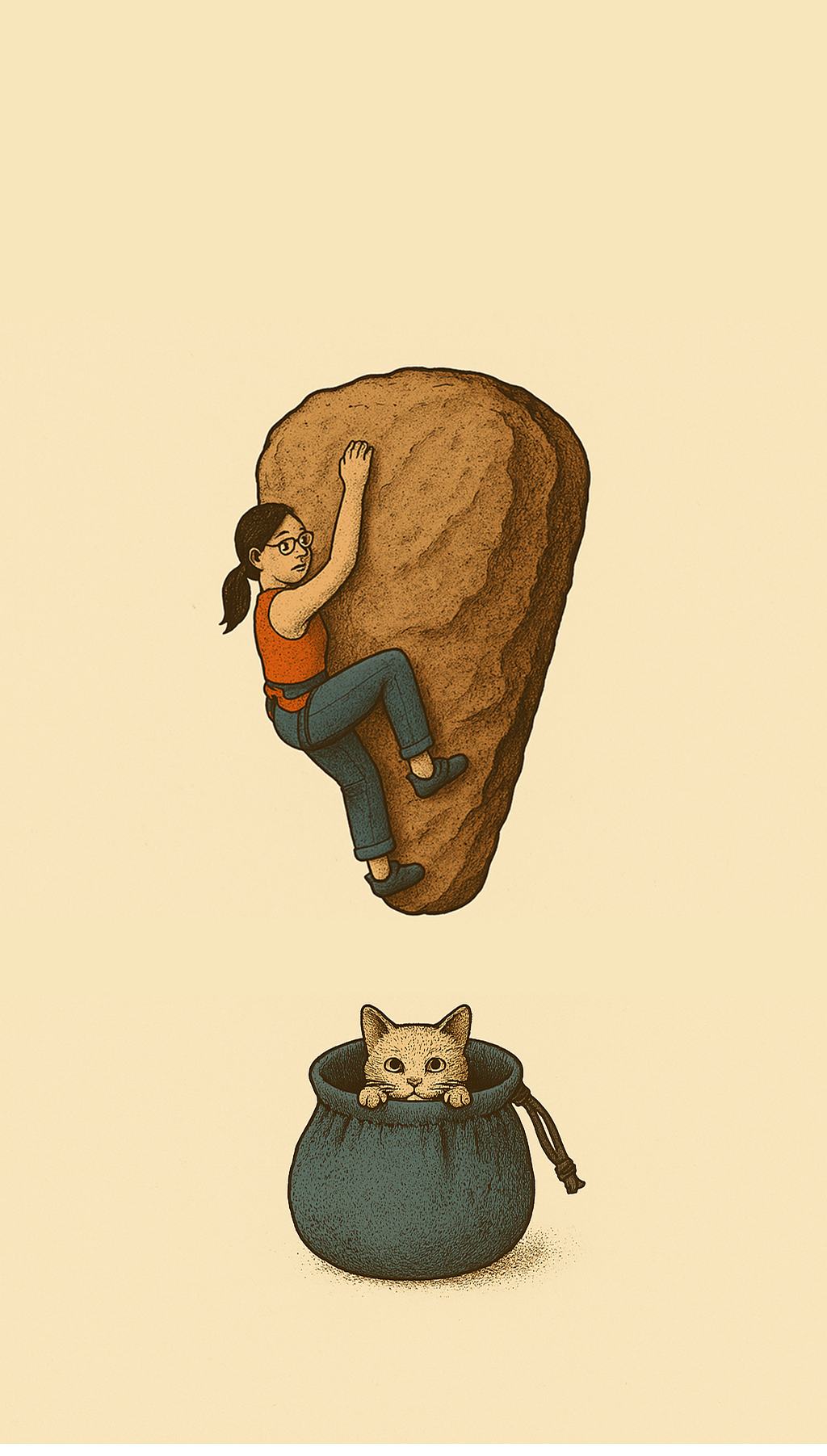Craft a Climbing Mind at Home: “The Peripersonal Spatial Memory Palace” Drill
Using Your Home to Train Body Awareness and Accuracy for Climbing
Context & Purpose
This drill turns your own living space into a literal memory palace for learning the actual dimensions of your body—by embedding them in everyday objects you see and touch daily.
Why? Because climbing is fundamentally about mapping your body onto space. Your brain does this through what’s called a body schema—a continuously updated neural map that tells you where your body parts are in space, their length, their shape, and how they can move in relation to the world.
Your body schema isn’t just abstract. It’s built on very literal measurements and experience—like knowing exactly how far your leg will reach, how much your hip can open, or how wide your arms can bridge. By enriching this map with real-life, easy-to-remember landmarks, you can move with more confidence and creativity on the wall.
Why It Works (Scientific Benefits)
Body schema refinement: Strengthens the neural representation of your body’s dimensions, proportions, and movement limits.
Peripersonal space calibration: Trains you to feel and anticipate spatial relationships (reach, span, bridging).
Embodied memory: Uses daily objects as anchors for recalling body-based knowledge quickly.
Motor planning: Improves route-reading and problem-solving by training the brain to estimate movement possibilities.
Creative movement rehearsal: Allows low-pressure exploration and visualisation away from the wall.
How It Works (Core Principles)
Externalise your body dimensions onto the environment.
Guess first—like onsight climbing: predicting whether you fit.
Check and measure to calibrate your accuracy.
Encode distances with vivid, familiar objects.
Practice recalling and using these distances to plan movement.
Step-by-Step Instructions
1. Eyeball & Guess (Onsight-Style)
Choose familiar objects: phones, mugs, kitchen scales, kettles, chairs, tables, sofas, laundry racks.
Stand near the object. Without measuring, guess which body part you think roughly matches it.
“I think this table is about my leg length from hip to heel.”
“I bet this cushion diagonal matches my hip height.”
This trains predictive perception, just like onsight route-reading: you’re forced to anticipate whether you can reach, bridge, or stem a gap.
2. Check & Measure
Now actually measure (or more carefully align) to see if you were correct.
Use a tape measure if you want precision, or simply line up your limb.
Note the difference between your guess and the real match.
Over time, you’ll sharpen your ability to accurately estimate distances just by looking.
3. Build Associations
Make a record in your mind or a notebook:
“Wallet = palm length.”
“Dining table width = leg span.”
“Sofa cushion diagonal = hip height.”
Repeat them out loud or silently as you move around:
“Wallet palm, table leg, cushion hip.”
4. Layer in Visualization
Sit or stand by these objects.
Imagine them as climbing holds or wall features.
Visualise moves that match these distances:
Chimneying between table edges.
Stemming sofa cushions.
Heel hooking the laundry rack segment.
Optional: Actually mime or rehearse these positions in your home.
5. Explore Across Spaces
Don’t limit yourself to one room. Compare measurements throughout your home or office.
Notice repeating patterns:
“Bookshelf width matches my arm span.”
“Bathroom tile height = tibia length.”
Build a network of object-body part links you can call on when reading climbs.
6. Reflect & Apply
Think about how knowing these measurements helps you on the wall:
“That span on the climb? Feels like my dining table.”
“That high foot? Matches the cushion diagonal.”
Practice applying this memory when you plan or attempt moves.
Over time, your brain learns to automatically access these calibrations to predict, plan, and adapt on real routes.
Optional Advanced Layer
Chain multiple objects into movement flows matching sequences you might climb.
Build entire imaginary routes through your home, linking remembered distances.
Practice imagining transitions and dynamic moves using those measurements.
Closing Thoughts
This isn’t about being obsessive with measuring. It’s about transforming your familiar space into an extension of your climbing brain, so your world itself becomes a training partner.
By turning your home into your Peripersonal Spatial Memory Palace, you’re not just learning your body—you’re learning to see climbing possibilities everywhere.
